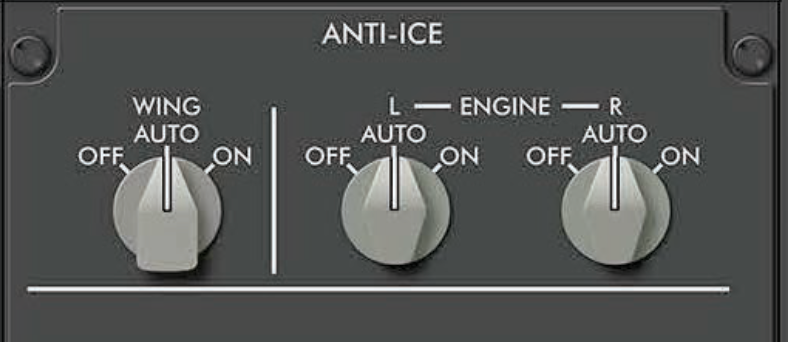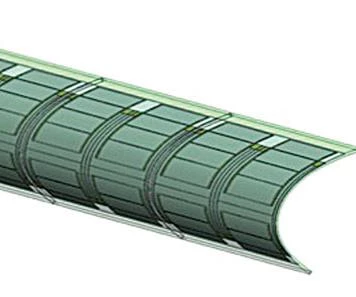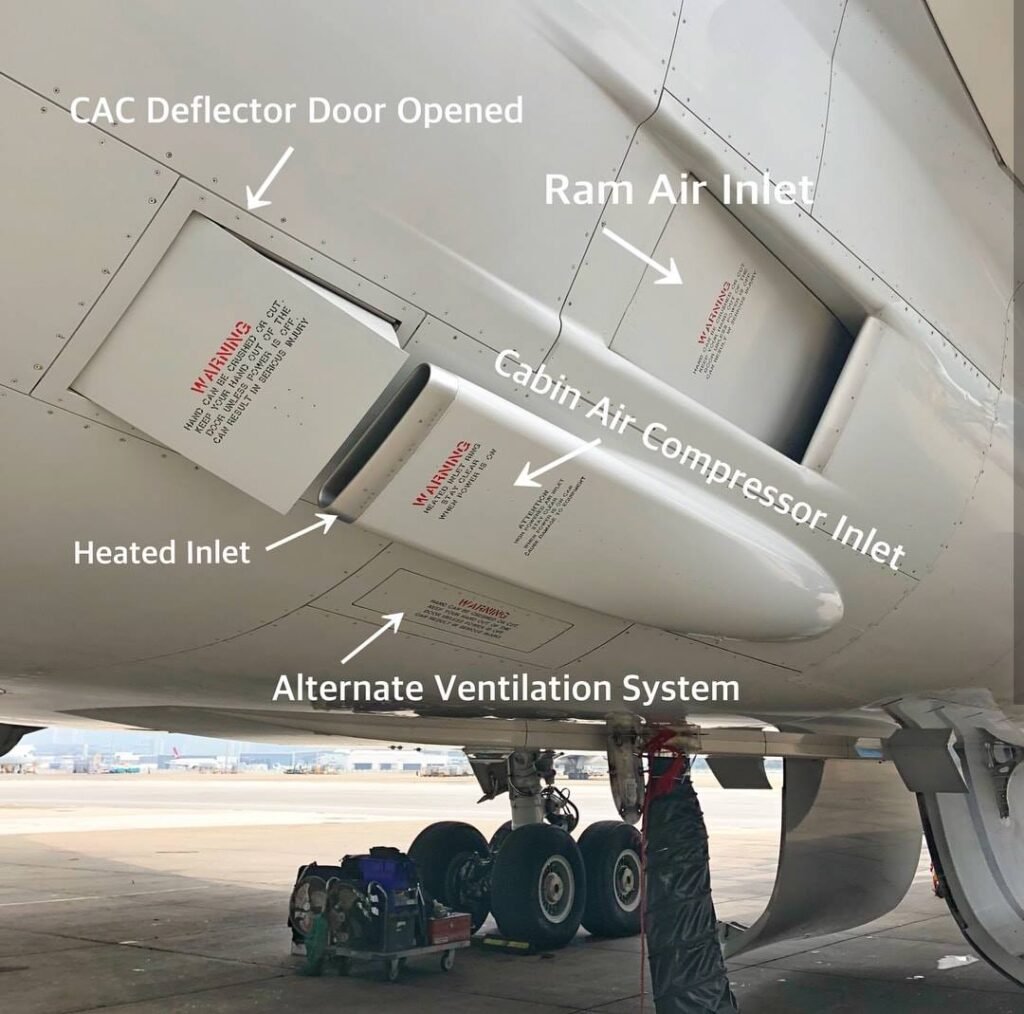Critical Insights: 101 Ice and Rain Protection System Explained
The aircraft is equipped with an Automatic Ice Detection System that provides signals that control the automatic mode of the Engine and Wing Anti-Ice Systems and controls the Pack Inlet Anti-Ice System when the aircraft is in flight.
It does so by measuring the liquid water content, TAT, and other air data information to determine if icing conditions exist.
1. Engine Anti-Ice
Provided by Hot Air Bleed from the respective engine
Hot bleed air is delivered to the Engine Core And to the Engine Cowl Inlet.

Limitations related to Engine Anti-Ice
| On Ground | In Flight |
| OAT 10°C OR Below & Icing condition Exist | |
| OAT 3°C OR Below, the engines must be run-up to a minimum of 35% N1 for approximately 60 seconds duration, at intervals no greater than 60 minutes. | Not to be used if OAT is below -40°C |
A Left and Right Engine Anti-Ice selector
- OFF: Turns off the system if the OFF position is selected and ice is detected. An EICAS caution message ICING ENG
- AUTO: operates the associated system based on signals from the automatic ice detection system only during flight. It does not operate automatically on the ground; when the aircraft lands, the auto mode shuts off the anti-ice for the associated engine.
The indication of engine Anti-Ice ON, EAI is displayed on EICAS by the associated N1 digital display.
- ON: turns ON the system on the ground or during flight. If no ice is detected and the TAT exceeds 10°C an EICAS Advisory ANTI-ICE ON
If an engine anti-ice valve is closed when commanded open, an EICAS Advisory ANTI-ICE ENG, if a bleed leak occurs, an EICAS ANTI-ICE LEAK ENG & the beeper sounds. If the Anti-Ice bleed air is not available (Bleed Leak), an EICAS ANTI-ICE LOSS ENG (L or R)
Question: What are the Automatic Engine Anti-Ice Valve Closure Conditions?
- Engine start
- Bleed overtemperature
- Bleed overpressure
- Engine Fire Switch Pulled
- Detection of bleed leak

2. Wings
Provided by electrical operation of thermal anti-ice mats on 4 mid-wing leading edge slats. There are 3 separate anti-icing mats on each slat, for a total of 24 mats. If one wing anti-ice thermal mat fails, the wing anti-ice system automatically de-powers the corresponding thermal mat on the opposite slat to prevent asymmetrical wing icing.
Operates automatically on the ground with speed above 75KTS and during flight.
It can only operate if TAT is below 25° Celsius Note: Do Not Use Wing ANTI-ICE When TAT Above 10°C

Wing Anti-Ice System
- OFF: turns off the system, with an EICAS message WING ANTI-ICE OFF displayed. The off position is not a normal position for operation.
- AUTO: Operates the associated system based on signals from the automatic ice detection system, if the system fails an EICAS ANTI-ICE DET WING is displayed. There are conditions when portions of the anti-ice may be shutdown 30 sec max, due to load shedding. System logic controls symmetric operation of left- & right-wing anti-ice. The indication of wing Anti-Ice ON, WAI is displayed on EICAS by the associated N1 digital display.
- ON: turns ON the System, if forgotten and the TAT is more than 10°C an EICAS message ANTI-ICE ON. And if the wing anti-ice is degraded or fails an EICAS message ANTI-ICE WING is displayed.
3. Pack Inlets
CAC’s Ram Air Inlet One on each side, an electric heater on the leading edge of each CAC inlet prevents ice formation by reducing ice formation in the duct during icing conditions. CAC inlet Anti-Ice operation is inhibited on the ground or when TAT is above 10° Celsius.
It must remain clear of ice, provides airflow for both CACs, and is electrically powered, and provides heat anti-ice protection to the pack inlets.
The pack inlet heat is automatically applied by signals from the automatic Ice Detection System.
If both CACs anti-ice fail, an EICAS ANTI-ICE PACKS is displayed; in that case, avoid icing conditions. There are no controls for this operation.

4. Flight Deck Windows
All windows are electrically heated.
- PRIMARY: Provides exterior anti-icing for the FWD windows only and anti-fogging protection for all windows.
- BACKUP: Provides anti-fogging for the FWD window only if the primary fails.

5. Probes
Probes are electrically powered, automatically powered when either engine is running, except when the TAT is inhibited on the ground.
- TAT probes: Inhibited on the ground, automatically heated in flight
- AOA probes: Automatically powered when either engine is running
- Pilot probes: Automatically powered when either engine is running. If all 3 pitot heaters failed, an EICAS advisory HEAT PITOT L+C+R.
Q & A
❓ What triggers the automatic ice‑detection system on the B787?
The system uses dual ice‑condition detectors—heated sensors analyzing liquid water content, TAT, and air data—to automatically activate engine, wing, and pack inlet anti‑ice when icing is detected both on the ground and in-flight.
❓ How does the engine anti‑ice system operate?
It uses engine bleed-air valves that close automatically upon bleed duct leak detection. The system prevents compressor icing by supplying hot air to the engine inlet.
❓ What ensures symmetrical wing anti‑ice heating?
If one wing’s thermal mat fails, the system automatically de‑powers the opposite wing to maintain symmetry and prevent unbalanced lift or handling issues.
❓ When does the pack inlet anti‑ice operate?
Powered by electric heaters, it runs automatically when TAT is below 10 °C, preventing ice from forming on ram-air inlet ducts feeding the pack. It operates both on the ground and in-flight.
❓ What type of anti‑ice system does the B787 use for wings?
Unlike traditional pneumatic boots, the B787 uses electro-thermal heating mats embedded in composite wing leading edges, offering efficient heat with lower power consumption.
❓ Can icing protection momentarily deactivate?
Yes—in heavy electrical load conditions (e.g., during flap retraction), wing anti‑ice mats may shed power for up to 30 seconds.